Test 6 Reflection
A reflection of my score.

This is my grade for this test.
Question 1
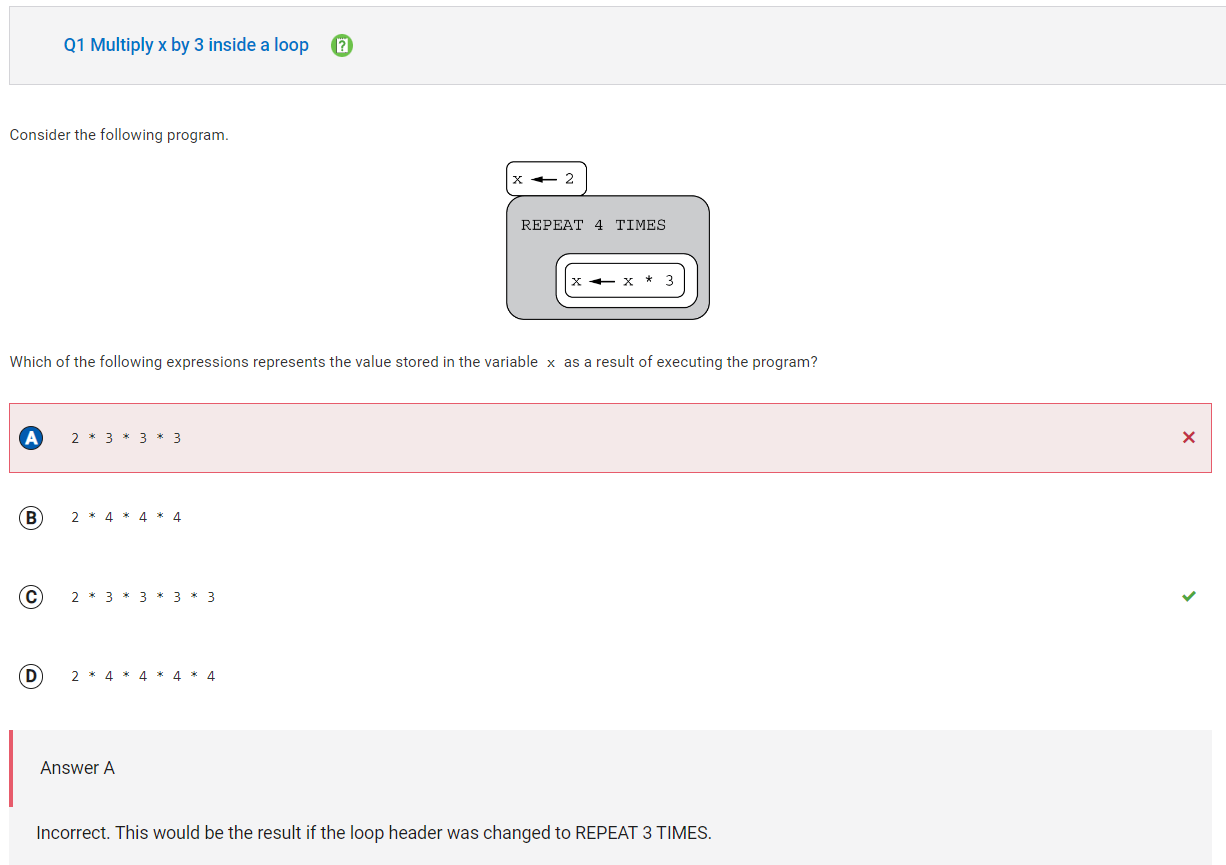
This would be the result if the loop header was changed to REPEAT 3 TIMES. The program needs to initialize x to 2, then multiply it by 3 a total of four times.
Question 2
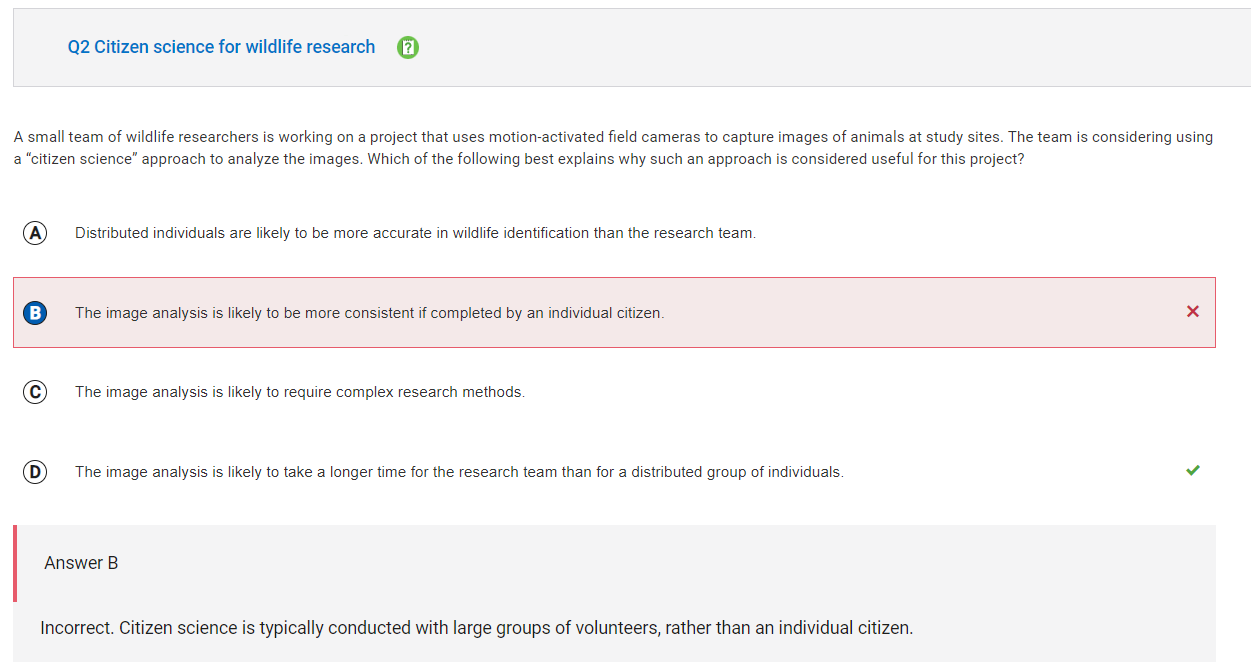
Citizen science is typically conducted with large groups of volunteers, rather than an individual citizen. Citizen science involves members of the general public participating in scientific research. Distributing the image analysis work to a larger group of individuals allows the work to be completed in less time.
Question 4
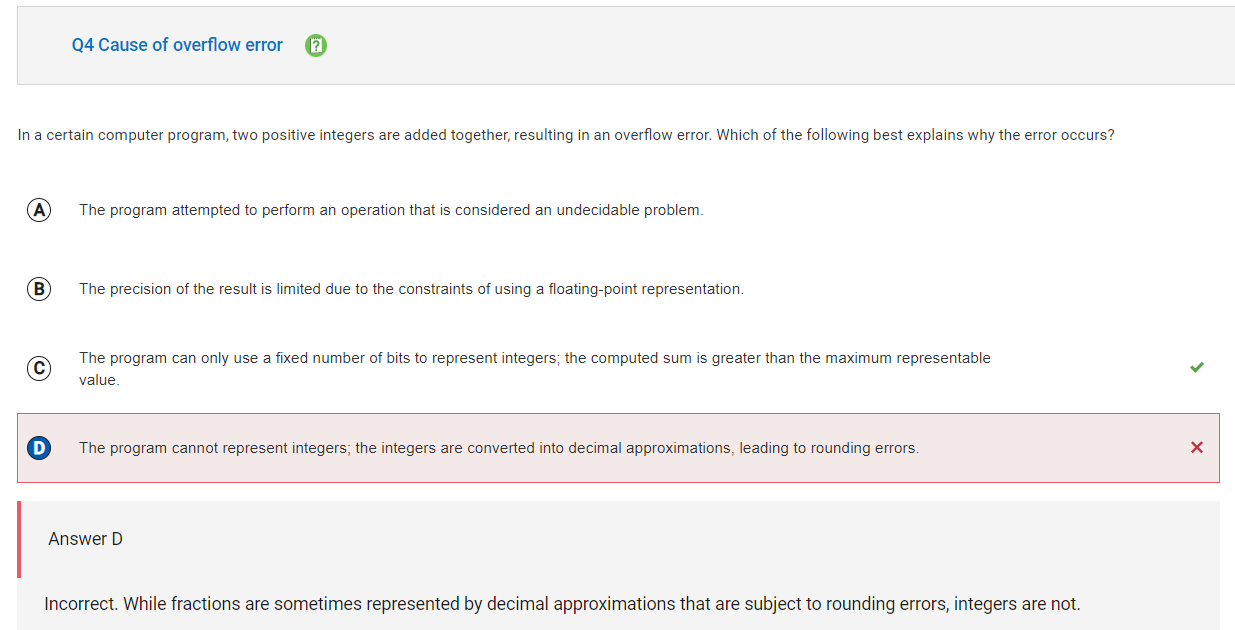
While fractions are sometimes represented by decimal approximations that are subject to rounding errors, integers are not. Overflow errors occur when an arithmetic operation results in a value outside the range of numbers that can be represented by a fixed number of bits.
Question 5
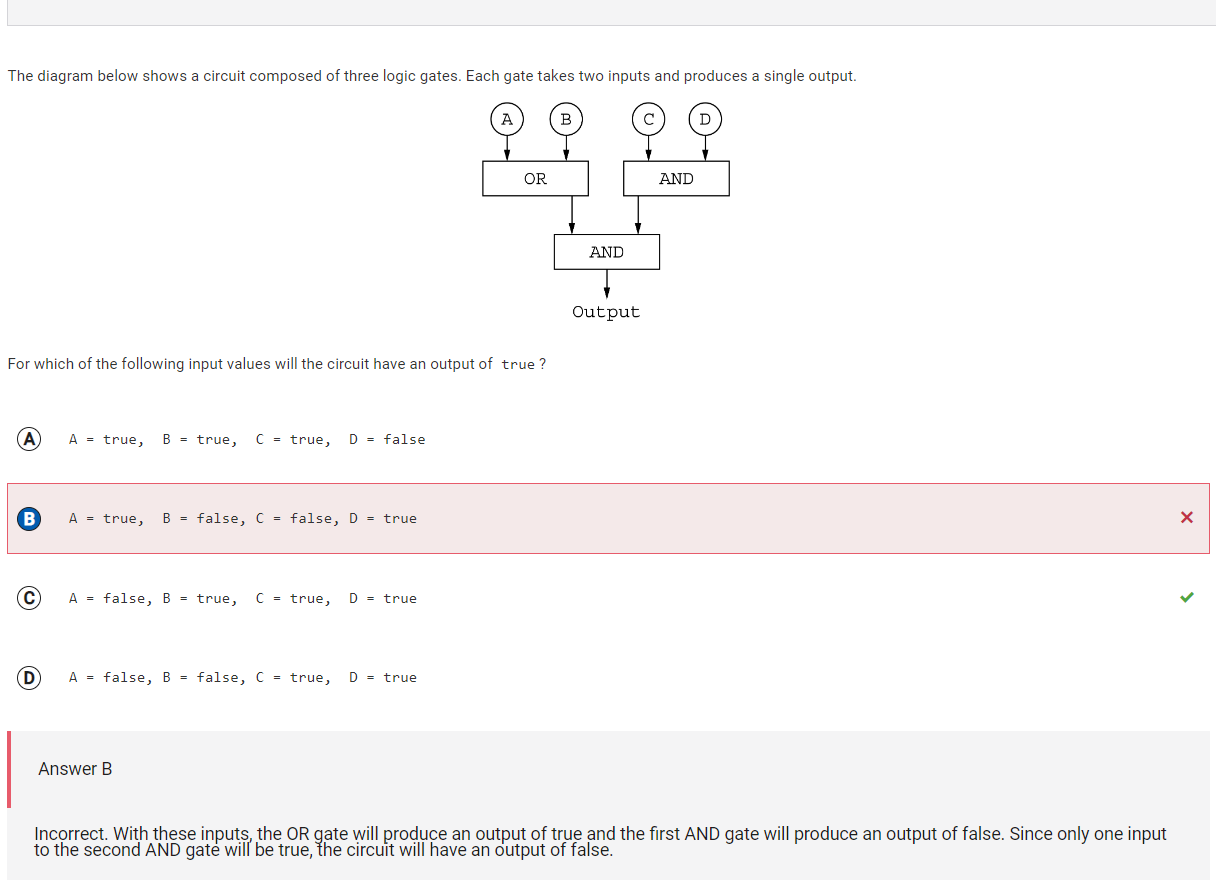
With these inputs, the OR gate will produce an output of true and the first AND gate will produce an output of false. Since only one input to the second AND gate will be true, the circuit will have an output of false. With these inputs, the OR gate will produce an output of true and the first AND gate will produce an output of true. Since both inputs to the second AND gate will be true, the circuit will have an output of true.
Question 24
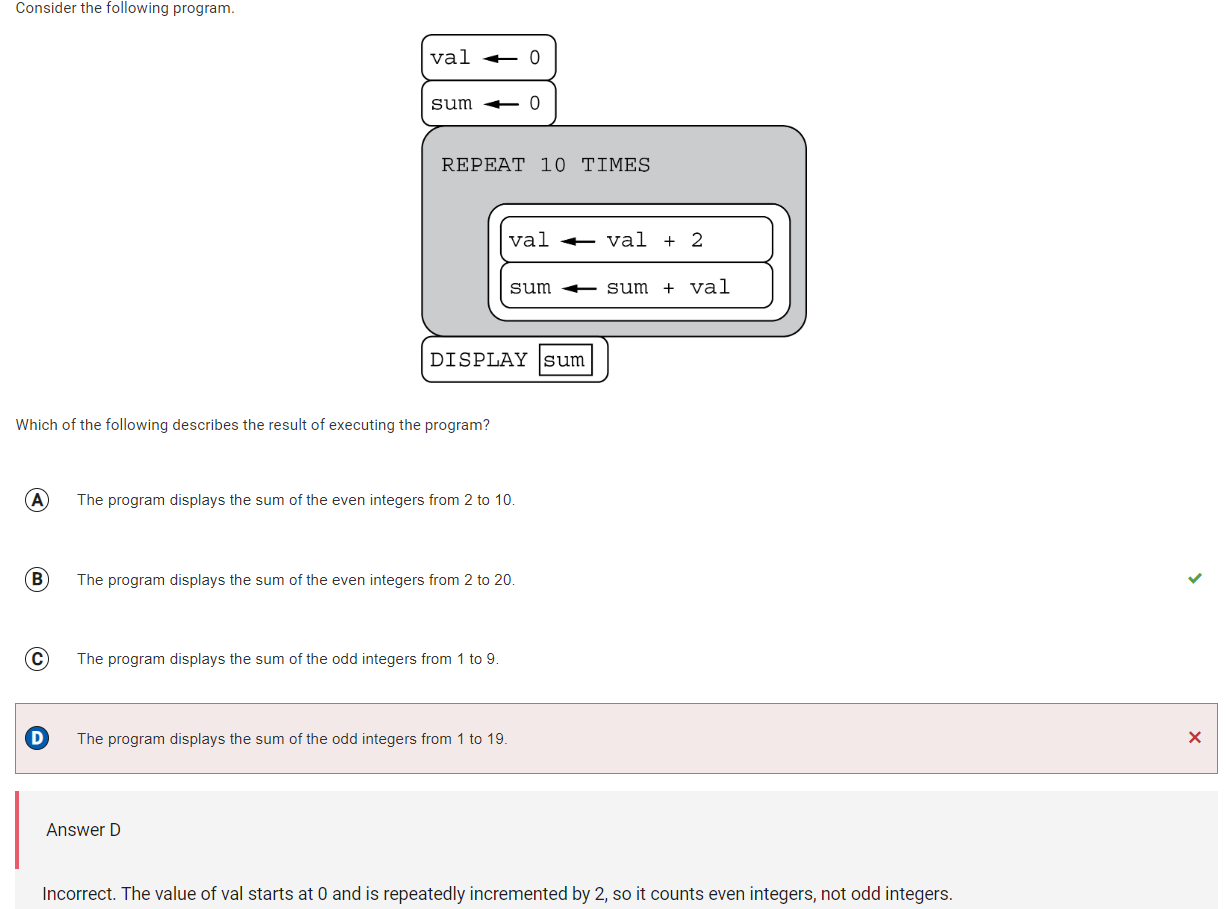
The value of val starts at 0 and is repeatedly incremented by 2, so it counts even integers, not odd integers. The value of val starts at 0 and is repeatedly incremented by 2, so the program calculates the sum of even integers. Inside the loop, val is incremented by 2 before being added to sum, so the first value added to sum is 2. The loop iterates 10 times, adding each intermediate value of val each time. Therefore, the program displays the sum of the even integers starting at 2 and ending at 20.
Question 28
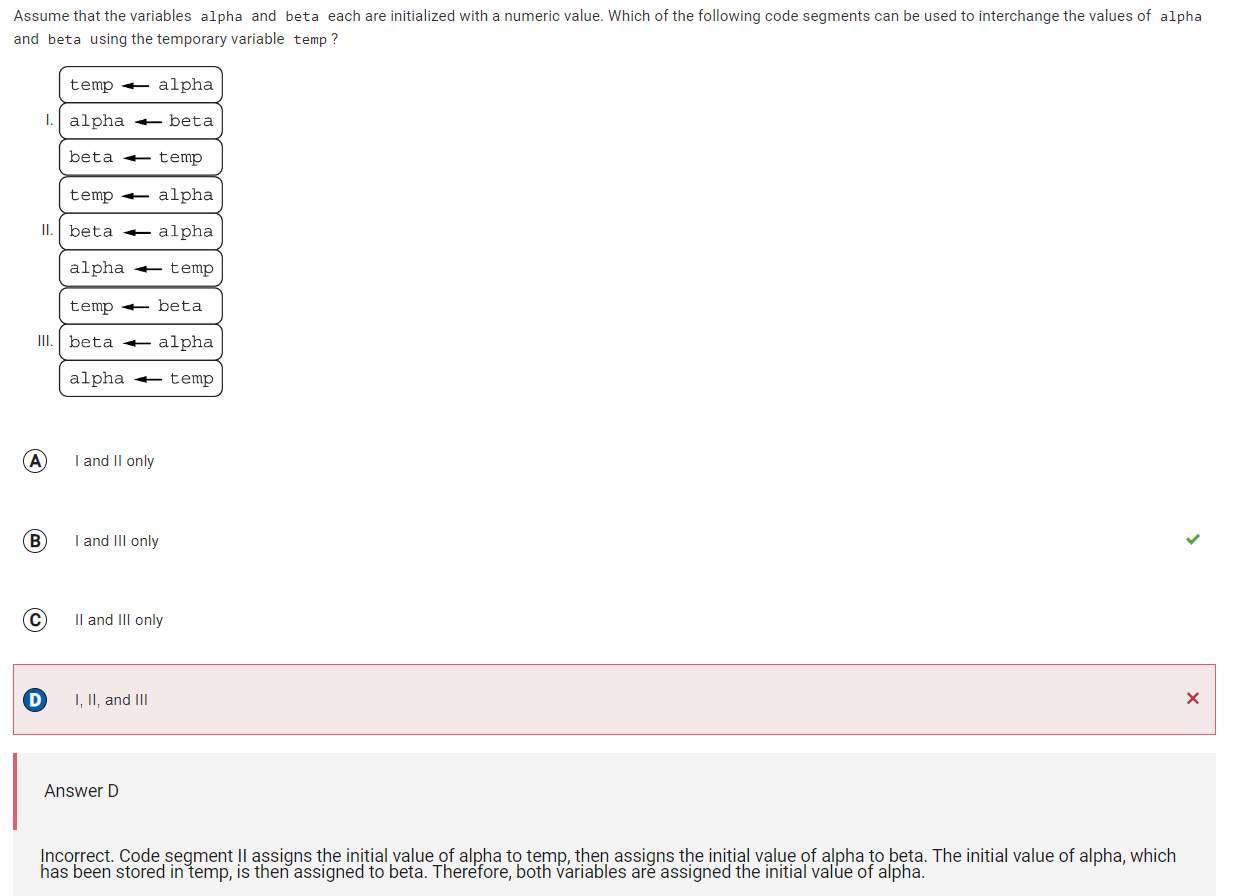
Code segment II assigns the initial value of alpha to temp, then assigns the initial value of alpha to beta. The initial value of alpha, which has been stored in temp, is then assigned to beta. Therefore, both variables are assigned the initial value of alpha. Code segment I assigns the initial value of alpha to temp, then assigns the initial value of beta to alpha. The initial value of alpha, which has been stored in temp, is then assigned to beta. Therefore, the values of alpha and beta are interchanged. Code segment II assigns the initial value of alpha to temp, then assigns the initial value of alpha to beta. The initial value of alpha, which has been stored in temp, is then assigned to beta. Therefore, both variables are assigned the initial value of alpha. Code segment III assigns the initial value of beta to temp, then assigns the initial value of alpha to beta. The initial value of beta, which has been stored in temp, is then assigned to alpha. Therefore, the values of alpha and beta are interchanged.
Question 36
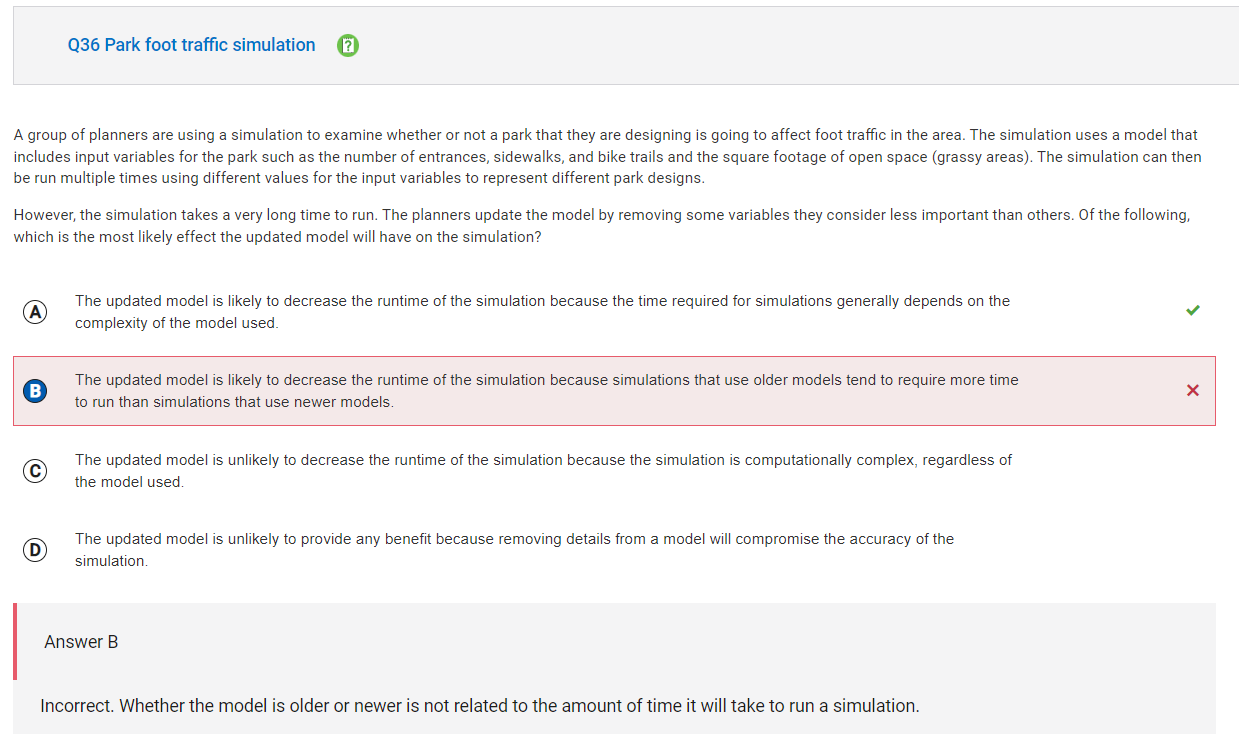
Whether the model is older or newer is not related to the amount of time it will take to run a simulation. The time required for a simulation to run is impacted by the level of detail used in the model. Generally, a simulation based on a less detailed model will require less time to run.
Question 38

IPv6 addresses are longer than IPv4 addresses. The length of the address has no direct effect on routing speed. IPv6 allows for a greater number of IP addresses than IPv4 does, which allows more devices to be connected.